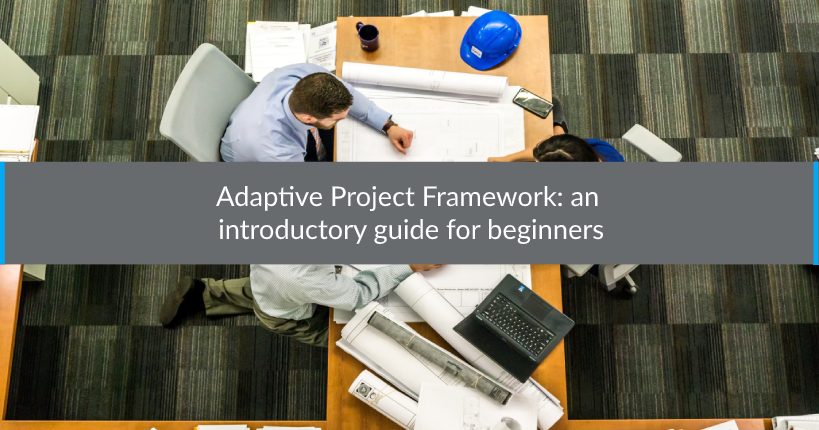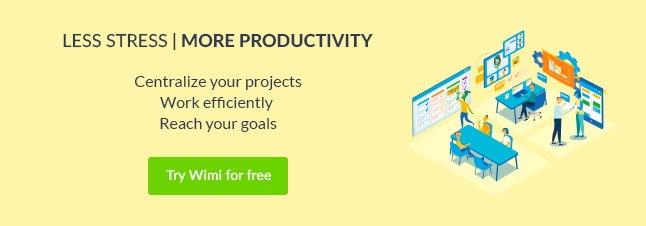Today, the majority of projects cannot be managed using traditional project management methods because they are generally too rigid. One of the main reasons for this is that it is often difficult to precisely outline all of the project’s requirements from the outset. There are many factors that can contribute to this difficulty, including constant changes in customer activities, vague business objectives and market or competitive developments.
Even if you are able to determine precise requirements, today’s world is changing and evolving at such high speeds, so your project requirements cannot remain fixed – they must also evolve throughout the duration of the project. Therefore, trying to steer a project with traditional methods that are too rigid is a waste of time and money. Project management is changing and it is time to adopt the Adaptive Project Framework (APF) methodology.
Definition
In 2010, Robert K. Wysocki, a recognized strategic leader in the field of project management, published the book Adaptive Project Framework: Managing Complexity in the Face of Uncertainty in which he describes the AFP approach.
The AFP method was created to constantly adapt to the changing environment of a project. Thus, nothing is fixed with this approach – neither the duration of the project, nor the budget, nor the risks, and it is possible to continually adjust everything according to changes in the characteristics of the project.
To use the same metaphor that Robert K. Wysocki used in his book: to manage your projects effectively with the APF method, you must think like a chef, not a cook. The cook is just following recipes, and if an ingredient is missing, he may be completely lost and won’t know how to continue following his recipe. On the other hand, a chef has the skills and experience to adapt to the situation and create delicious recipes with the ingredients that are available.
In order for this methodology to be successfully implemented, these two conditions are essential:
-your team must not be resistant to change. On the contrary, it must be able to accept it, adapt to it and learn;
– the client must be fully involved in the management of the project from start to finish, and your team must maintain a relationship of trust based on exchanges.
Finally, bear in mind that AFP is not a universal approach to be used as such, but that it continually adapts to change. It uses the just-in-time planning approach, it considers the client as the main decision-maker, it provides maximum business value, and it eliminates anything that does not add value.
How does it work?
The Adaptive Project Framework methodology consists of five steps.
1. Definition of the project scope
To begin with, it is essential to define what will satisfy the customer. In other words, what is the objective of the project? What are the customer’s needs to be met? It is therefore a question of determining the conditions of satisfaction (CdS). Don’t forget that a project without a precise goal is doomed to fail. Obviously, the customer must validate the SOF.
Then you have to draw up the Project Overview Statement (POS) which summarises the conditions of satisfaction, describes what will be achieved and how, and lists the risks and potential obstacles as well as the predictions for success.
Finally, you must produce three documents:
– the list of functional requirements that prioritize the actions to be carried out. This list may change as the project progresses;
– the project work breakdown structure (WBS), which breaks down the work to be done to achieve the project objectives;
– The Scope Triangle, which shows how the different constraints of the project, namely time (that is, the deadlines for completing the project), costs (the budget and available resources) and the scope of the project, influence the quality of the project.
2. The cycle schedule
The project is divided into mini-projects or cycles (also called iterations), and each cycle must provide one or more deliverables. This second step involves the planning of each project cycle. The objective is to define and plan the tasks to be accomplished.
You list the individual tasks to be carried out according to the WBS, establish the order in which they are to be carried out, identify their interdependencies, assign them to your employees, and define their deadlines.
3. Carrying out the cycle
In this stage, we start working on the project. Follow and adjust the cycle as you go along. The cycle ends when the previously defined time has elapsed. Anything not completed in this cycle will be carried over to the next cycle.
In each cycle, it is important to note all requests for change and ideas for improvement. Problems encountered should also be noted so that they can be addressed in subsequent cycles.
4. The customer checkpoint
This is an essential step in the AFP method. The client reviews the quality of what has been delivered during this cycle. Together with the project manager, they plan any corrections or improvements to be made in the next iteration.
From there, the process repeats itself (planning, execution and verification) until the project is completed.
5. The final report
At the end of the project, the project manager, the team and the client evaluate the success of the project and determine whether the objectives have been achieved. They document what was learned and identify possible process improvements for future projects.
Conclusion
Each project is unique. The methods used to manage them should therefore also be unique and adapted to the circumstances of each project.
This is the case with the Adaptive Project Framework methodology, which offers great flexibility and makes it possible to work jointly with the client throughout the project to ensure client satisfaction, and therefore the success of the project.










